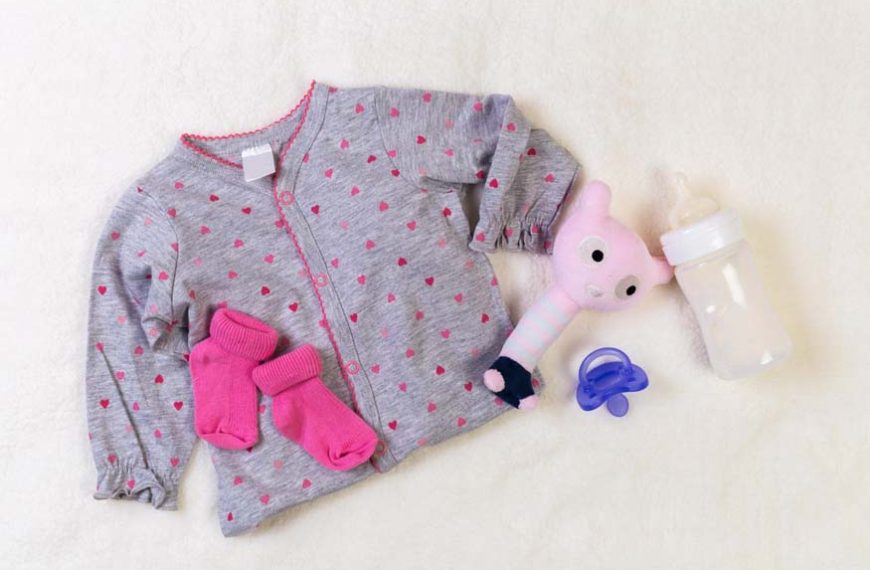Welcoming a baby into your life and home is a thrilling and special moment for any family. We start planning for so many things the moment we conceive, like planning the finances, the baby’s room, furniture, and so many more things. One such thing that many parents start planning beforehand is the baby’s wardrobe. This could appear to be straightforward, yet it requires a lot of thought and planning. But worry not. We have you covered! Here is a detailed list of everything you should know about how to plan for your baby’s clothes in advance. Read on.
Respecting Traditional Beliefs
In numerous Indian families, there’s a belief that buying clothes for an unborn baby could bring misfortune. This custom, which believes in warding off the ‘evil eye,’ largely influences how parents or families of newborns plan their unborn baby’s wardrobe. When it comes to our babies, we don’t want anything inauspicious close to them. So, if you do believe in any such tradition or custom, it is totally understandable. You can still work your way around them to plan for your baby’s clothes in advance by making them from existing material available at home, like a soft durrie or your mom’s old cotton saree.
Arranging, Planning & Preparation
- Make a Wish List:
- Research On the web:
- Use Family Backing:
It’s important to make a detailed list of newborn wardrobe essentials, even if you won’t buy anything right away. This wishlist can incorporate everything from onesies and sleepwear to diapers and gloves.
Search online stores and waitlist things. It’s easy to add specific baby clothes to your online shopping cart so they can be purchased immediately once the baby is delivered. This is a convenient way of buying baby clothes in advance.
The extended family plays a significant role in Indian families. Based on your newborn baby clothes list, relatives can be very helpful in getting baby clothes after the birth.
Picking the Right Garments
- Texture Matters:
- Size and Number:
- A mix of the Old and New:
Given India’s extreme weather conditions, picking the right fabric and texture for clothing is important. Cotton is ideal for most of India, especially during the hot and humid months. It is soft and breathable.
Children grow fast! Purchasing garments in various sizes will be prudent. Also, keeping a good supply of each kind of clothing on hand is useful when you consider how often babies need to be cleaned and changed.
While baby clothes are very user-friendly these days, many Indian families value traditional attire for their newborns. You can search for clothing that’s a mix of both – it honours tradition and embraces modernity.
Safety & Comfort Matters The Most
- Avoid Rough Embellishments:
- Simple to Wear:
Garments with heavy weaving and tiny separable parts can be uncomfortable and unsafe for infants as they are potential choking hazards.
Select garments that are not difficult to put on and take off, taking into account the regular diaper changes and the sensitive skin of infants.
Open Up to Recycled & Second Hand Garments
In India, we have a practice of passing down garments from older siblings or cousins to the newborn babies in the family. This is seen as bringing luck and progression inside the family. It also helps save expenses and take the family legacy/memories forward. For instance, a hand-weave sweater from Naani or a beautiful celebration outfit from an older cousin is more filled with nostalgia than a new piece of clothing. While using hand-me-downs, ensure they are in good condition, checking for any free fastens or harsh creases that could harm the baby’s skin. Washing them with a delicate, child-safe cleanser is essential to ensure they are perfect and safe for your infant.
Opt for Sustainable Clothing Options
Progressively, Indian guardians are inclined toward sustainable clothing for their infants. This includes selecting clothing made of organic cotton grown without harmful pesticides and that is softer and gentler on the baby’s skin. Purchasing such clothes helps the environment and the economy of the area.
Clothing Tips for Child Garments
- Pick the Right Cleanser:
- Stain Pretreatment:
- Washing Guidelines:
- Drying:
- Divide the Baby’s Wardrobe Into Sizes:
- Use Cabinet Dividers:
- Seasonal Change:
- Labelling:
Settle on gentle, hypoallergenic cleansers intended for children. These won’t bother the baby’s delicate skin.
Clothes are frequently stained by babies. Pre-treating stains with a delicate stain remover prior to washing can be useful.
Follow the washing labels on the baby’s garments. Utilise the delicate cycle on your clothes washer and consider hand-washing delicate things.
Sun-drying is great for keeping the clothes fresh and killing bacteria.
Put together garments by size and type. This assists you with finding the right outfit quickly and is a key part of how to organise newborn clothes. It’s essential to have a system in place to make buying baby clothes in advance easier to manage once the baby arrives.
Dividers in drawers keep garments sorted – onesies in one section, socks in another, and so on. This strategy is an excellent way to manage newborn wardrobe essentials effectively.
You could also arrange or stack the garments as per season. Store off-season garments somewhere else, like winter wear inside and summer wear in the front. Organising baby clothes by season is an integral part of how to organise newborn clothes.
Labelling the sections can assist every member of the home with finding what they need without your help whenever you are not around. This is a crucial step in how to organise newborn clothes and manage your newborn baby clothes list efficiently.
Planning your baby’s clothes in advance is beyond a shopping task; it’s a mix of striking a balance of cultural, climatic, and financial aspects and, most importantly, the baby’s comfort. It’s an experience that will go down your memory lane, so do involve your spouse and other close family members, too. Take experienced parents’ help if required. By following this guide, we hope you are able to seamlessly plan your baby’s clothes. For more such useful blogs, do visit us at EuroKids
















